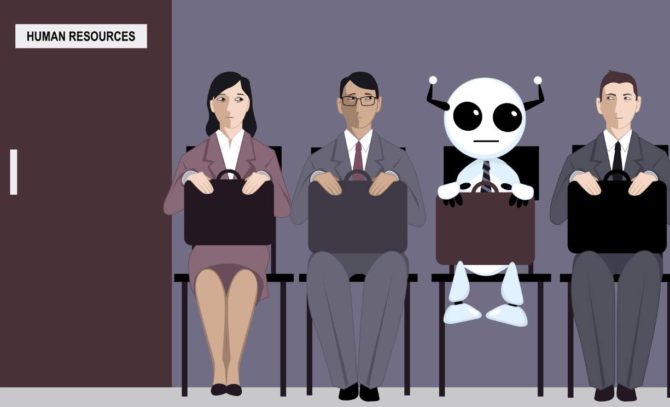As business leaders debate the impact of artificial intelligence on the jobs market at the World Economic Forum (WEF) in Switzerland, technology decision-maker in the retail banking sector are playing down concerns by emphasizing the concept of “workforce augmentation”.
copyright by diginomica.com
 One robot can do the work of up to five human employees, according to Capgemini. A Udemy study says 43 percent of workers cite the fear of losing their jobs to AI as the main cause of stress at work. On the other hand, Gartner is predicting that AI could create 2.3 million jobs by 2020, exceeding the 1.8 million that it could wipe out.
One robot can do the work of up to five human employees, according to Capgemini. A Udemy study says 43 percent of workers cite the fear of losing their jobs to AI as the main cause of stress at work. On the other hand, Gartner is predicting that AI could create 2.3 million jobs by 2020, exceeding the 1.8 million that it could wipe out.
Regardless of the impact on job vacancies, AI in banking is a fast-developing reality. The cost of developing and deploying systems for specific uses in the workplace and adaptation to bank’s legacy portfolios is influencing the pace and extent of automation take up.
Moreover, sector organizations are faced with the task of determining quality and quantity of workloads as the technology is introduced. All this should ultimately translate to the holy grail of improved customer service and workforce efficiency.
Cutting down on time-wasting
One of the current and most basic objectives for AI at banks is a reduction in time “wasted” on any task that can be automated. AI technologies are serving banks well in the realm of robotic process automation (RPA) for rules-based tasks, such as entry, validation, and manipulation of data, as well as creation, uploading, and exporting of data files. Account reconciliation, report generation, mortgage approval, notification of delinquent loans and audit support are other examples of back-office activities to which artificial intelligence can be applied.
According to Chuck Monroe, head of artificial intelligence enterprise solutions in the innovation group of US bank Wells Fargo, AI is improving banking processes by providing the ability to sift through data quickly and extract valuable insights, with people still being a key part of the equation. […]
read more – copyright by diginomica.com


As business leaders debate the impact of artificial intelligence on the jobs market at the World Economic Forum (WEF) in Switzerland, technology decision-maker in the retail banking sector are playing down concerns by emphasizing the concept of “workforce augmentation”.
copyright by diginomica.com
Regardless of the impact on job vacancies, AI in banking is a fast-developing reality. The cost of developing and deploying systems for specific uses in the workplace and adaptation to bank’s legacy portfolios is influencing the pace and extent of automation take up.
Moreover, sector organizations are faced with the task of determining quality and quantity of workloads as the technology is introduced. All this should ultimately translate to the holy grail of improved customer service and workforce efficiency.
Cutting down on time-wasting
One of the current and most basic objectives for AI at banks is a reduction in time “wasted” on any task that can be automated. AI technologies are serving banks well in the realm of robotic process automation (RPA) for rules-based tasks, such as entry, validation, and manipulation of data, as well as creation, uploading, and exporting of data files. Account reconciliation, report generation, mortgage approval, notification of delinquent loans and audit support are other examples of back-office activities to which artificial intelligence can be applied.
According to Chuck Monroe, head of artificial intelligence enterprise solutions in the innovation group of US bank Wells Fargo, AI is improving banking processes by providing the ability to sift through data quickly and extract valuable insights, with people still being a key part of the equation. […]
read more – copyright by diginomica.com
Share this: